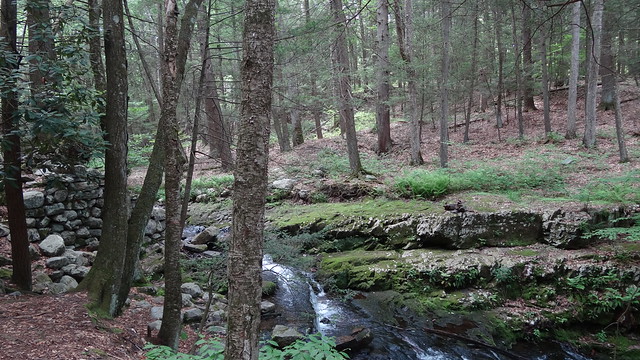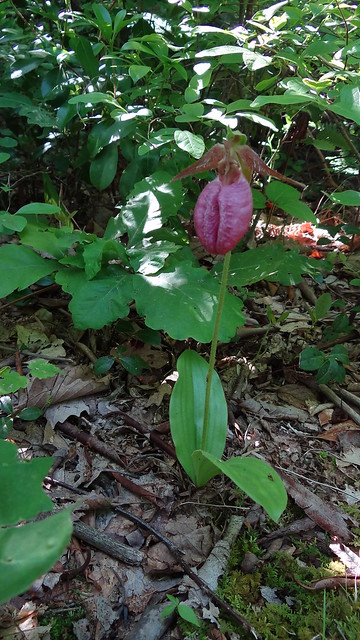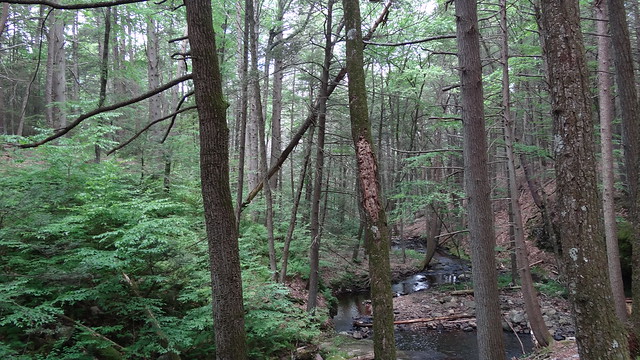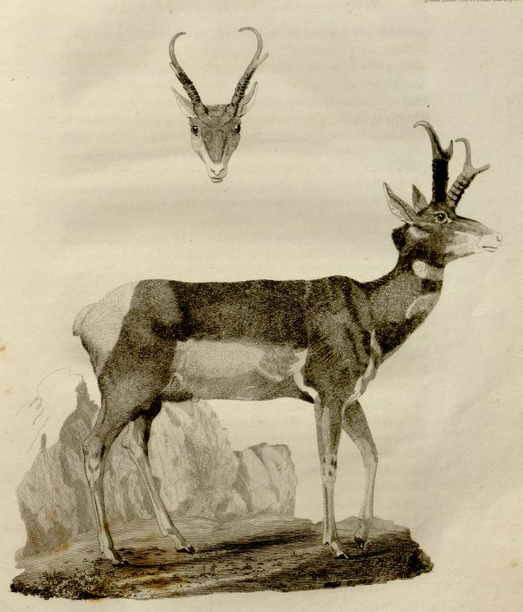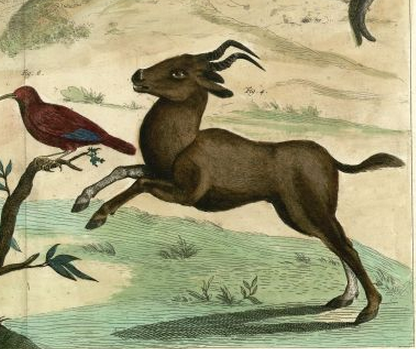Three in the morning comes early these days, but somehow, for some unknown reason, I find myself just able to roll out of bed when I know that the reward for getting up in the dark is birds at dawn.
Fifty miles and 1700 feet of elevation later, I arrived at High Point just before 5:00. I stood, shivering slightly, in the parking lot, watching those rosy fingers break the eastern sky and listening to eastern phoebes and chestnut-sided warblers: it’s breeding season in Sussex County.
The rest of our congenial band was there right on time, and we set off to see what the lavishly leafed woods might hold. The sonic background, at dawn and all day, was provided by gray catbirds and red-eyed vireos, and the day’s first great crested flycatcher and indigo bunting greeted us as we emerged from the dark forests of the Appalachian Trail to bird the famous ATT tower that two decades ago saw the first reliable nesting pair of common ravens in the state in my lifetime. Ravens can be seen essentially anywhere in north Jersey now, but every High Point visit starts with a pilgrimage to the founder pair — and, today, the two fledglings they were so noisily guarding against intrusion.
The sun well up and the air slowly starting to warm, we moved on down Sawmill Road and took a longer walk. It was unusually quiet for the first week of June, but veeries, yellow warblers, and eastern towhees were in abundant evidence, and after a few minutes when I wondered what on earth was going on, we finally managed to find our first pair of cerulean warblers along the trail; the female flew in and gave the usual fleeting glimpses, and the male eventually flew across the path where we stood to give excellent views. Uncharacteristically, these were the only ceruleans we saw all day, though we heard another half a dozen males or so along our route.
After a quick stop at the monument to pick up the late arrivals, it was off to Kuser Bog, the real jewel in the High Point crown.
Lady’s-slippers and red efts kept our minds off of the relative lack of birds on the way in, but once we were at the bog, no distraction was necessary. Northern waterthrushes sang loud and close, and to my surprise, on actually allowed itself to be watched in the act: this bird is always conspicuous in the summertime bog, but rarely visible at all, much less perched up and showing off like this noisy male was.
Birding time always accelerates mid-morning, so we tore ourselves away and headed south through the woodlands to Stokes State Forest. A northern parula welcomed us to Ocquittunk, where the day’s first yellow-throated vireo sang invisible from the tall trees. I couldn’t turn up a Louisiana waterthrush at Kittle Field, so we went on to Stony Lake in search of Blackburnian warblers. It took a while, but we eventually heard a singing male, frustratingly close and always out of sight.
As so often, though, the search, futile in terms of flame-throated Setophaga, turned up something we weren’t looking for. Blue-headed vireos are scarce breeders even in Sussex County, so I was delighted to discover one taking caterpillars in a hemlock.
Doubly delighted when it swallowed its meal and started gathering cobwebs and willow fuzz.
And triply, quadruply, infinitely delighted when its mate flew to the nest still under construction in a nearby tree. I’d never found a nest in New Jersey, and to watch this one a-building was the highlight of my day, especially when the builders nearly disappeared into the fluffy half-globe, just their tails sticking out as they adjusted something visible only to themselves in the deep cup.
Almost twelve hours in, we — I — started to feel the afternoon drowse coming on. Our final stop was Van Ness Road, where prairie warblers stumbled up the scale and a broad-winged hawk soared overhead. A funny song, bzz-bzz-bzz-bzzzzz, like a golden-winged warbler standing on its head, turned out to issue from the mouth and syrinx of a perfectly “normal”-looking blue-winged warbler, but who can tell….
The croaking of a distant common raven seemed an appropriate bookend to the day. As we watched the sky, it flew closer and was joined by another — and then, suddenly, both of them were energetically mobbing an immature bald eagle. Just a dozen years ago, either of those species would have been noteworthy on a warm Sussex County afternoon.
And they’re still far from everyday, especially when they’re interacting so dramatically just over your head. Just another day in North Jersey? Yes. And I’ll take a thousand more like it, please.
Even if I have to get up early.
I think this is the complete list for the day; I trust that the trip participants will let me know if I’ve left anything off.

